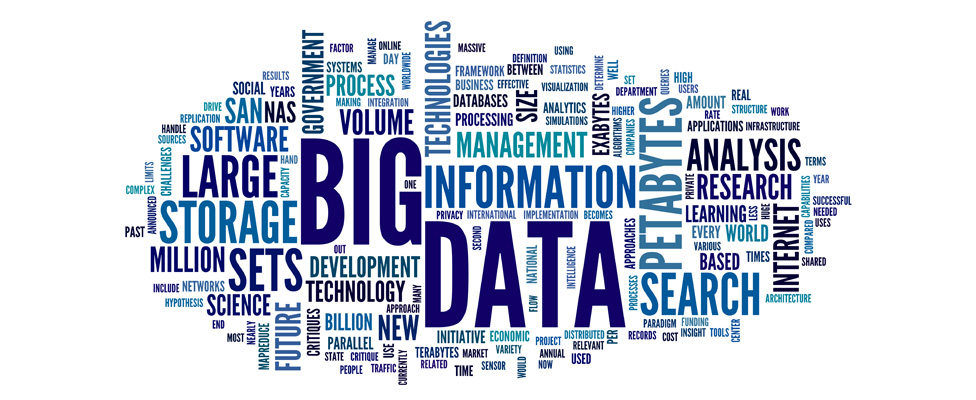With data being a game-changer in every industry, modern businesses constantly utilize data to improve performance and gain a competitive edge. Understanding data goes beyond analysis; it requires gathering relevant data and ensuring business leaders deliver clear insights, strategies and well-informed decisions.
Maintaining a competitive edge in the current tech job market necessitates reskilling in advanced technologies. For someone in the information technology field, having big data in your toolkit keeps you at the forefront in several industries. From earning whopping salaries to landing one of the ideal jobs, it is imperative to upskill in big data.
In this article, we will cover topics like what big data is, types, benefits, and processes to convert raw data into actionable insights.
What Is Big Data?
The term “big data” refers to large and complex data sets that extensively grow over a period. These data often include structured, unstructured and semi-structured information that is challenging to manage and analyze with traditional data processing tools.
- Structured Data: Financial Transactions, Inventory Databases, Metadata
- Semi-Structured Data: Emails, JSON, HTML and XML
- Unstructured Data: Mixed Data Sets, Social Media Posts and Videos

In recent years, big data has only gotten bigger and more complex due to technological breakthroughs. This breakthrough made a significant impact on computing and storage costs, making it much easier and cost-effective to store data for better decision-making. Business leaders and execs reliability solely depend on big data to gain insights, predict behavior, make assumptions and recognize patterns.
Types
With massive amounts of data generated daily, such information cannot be categorized or analyzed similarly. Categorizing them in a specific manner allows for easy analysis and prediction. Let us define the different types of big data.
- Structured Data
Data that is easily accessible and stored in a fixed format. Structured data is the simplest to work with due to its highly coordinated measurements. Such data are highly organized, follow a predefined schema and can be stored in relational databases (SQL).
- Semi-Structured Data
Semi-structured data is the combination of both structured and unstructured elements. Such data lack a fixed schema. However, it includes tags and markers that separate data elements. Semi-structured data are more flexible in comparison with structured data. Although they’re easy to parse, doing so can be resource-intensive.
- Unstructured Data
As the name suggests, unstructured data formulates data that aren’t structured, e.g., audio files, images and videos. This form of data is intricate due to its relatively larger size and unfamiliar structure.
They have high storage capacity and are suitable for storing large amounts of diverse data.
Benefits
You can extract a person’s data points with just a click of a button. Sound familiar? Gone are those days when you could gather a few data points from a person’s history (from the time they were born till their death).
Today, your data gets stored and is readily accessible the moment you enter your personal information on the website. Big data plays a significant role in driving smart business decisions.
Below are a few big data benefits.
Facilitate Targeted Promotions
Businesses can deliver customized products based on their target preferences without spending a dime on promotional campaigns. Large business enterprises can now rely on big data to ensure their campaigns reach specific targetted audiences. With big data, such enterprises can gather relevant customer information and track customer trends.
These insights are helpful in strategizing marketing campaigns to improve customer experience and loyalty.
Boost Innovation
With insights gained from customer trends and analysis, enterprises can focus on innovating newer products while focusing on improving existing ones. Customer insights play a huge role in identifying which features fit their customer base.
These insights help the product development team build products that align with the customer’s requirements and monitor the product’s success and competitors within the same domain.
Improve Customer Acquisition
Customer trends and analysis specifically determine their interests, preferences, requirements and purchase behavior. A customer’s digital footprint can reveal significant information, like consumer patterns. These patterns further help strategize and tailor the products and services based on the customers’ specific needs.
Identify Potential Risks
Every business undergoes high risks, hence the need for effective risk management solutions is critical. With big data, enterprises can analyze patterns and develop effective risk management strategies.
Big data tools bridge the gap between unexpected potential risks and unforeseen challenges.
Some of the industries that use big data include:
- Healthcare: Healthcare practitioner uses big data to track patient status, medical history and medication. Based on the data gathered, the healthcare practitioner can analyze potential illnesses and even deliver personalized care.
- Banking: Big data from the banking and finance industry helps predict card fraud by analyzing the customer’s transaction history. It prevents online criminal activity, such as identity theft or unusual translation patterns.
- Retail and Wholesale: Inventory management is crucial in the retail and wholesale industry. Businesses that deal with inventory on a daily basis need to ensure the stocks are up to date. Big data can predict the sale of products that are likely to make profits. Analyzing the selling trends and patterns can predict the month or even the time of the year that is likely to make more profit.
- Marketing: The marketing industry is one of the most common fields where businesses are using big data to the core. Industries that offer services and products are most likely to use big data.
Big data helps track the customer’s buying patterns, online purchasing habits and the most bought product. These insights are helpful in building business strategies and brand outreach.
5 Step Process
To set up the big data processing landscape, you must ensure to follow the five stages.
- Data Extraction
The first and foremost step is data extraction from multiple sources – web pages, enterprise applications, transactional records, marketing tools, images, audio and videos (structured, semi-structured and unstructured).
Analyze these data, verify the source and remove incorrect data (if present).
- Data Transformation
Transform or modify the data into a consumable and understandable format. Feature selection, aggregation, binning and clustering, and normalization are techniques businesses can use to modify or transform data. As a result of data transformation, organizations can make informed business decisions and become more efficient.
- Data Loading
After the transformation stage, businesses need to load data into a centralized system. Big data ETL (extract, transform and load) simplifies the process of data loading. The data loading process is well-defined, consistent and automated.
- Data Visualization
Data visualization tools such as Qlik Sense, Tableau and Kibana help visualize large datasets and predict “what if” analyses.
- Machine Learning Application
This stage is all about building models that can learn, adapt and evolve to respond to new inputs. Supervised, unsupervised and reinforcement learning are some of the machine learning types that help train models.
Wrapping Up
From marketing to the banking industry, big data has become an integral part of multiple industries. A report from Marketdataforecast predicts that the global big data market size is expected to grow at a CAGR of 12.44% from 2024 to 2032.
With data soaring at a considerable size, the demand for big data products will continue to increase. The increased usage of AI will have the most influence on big data’s future!





